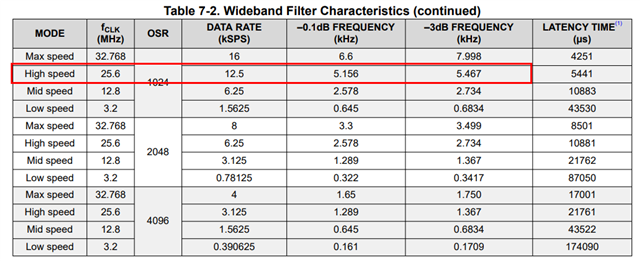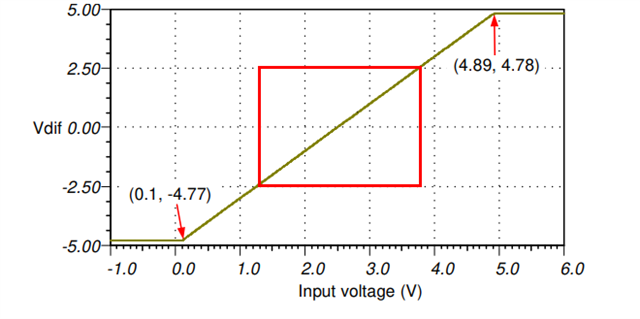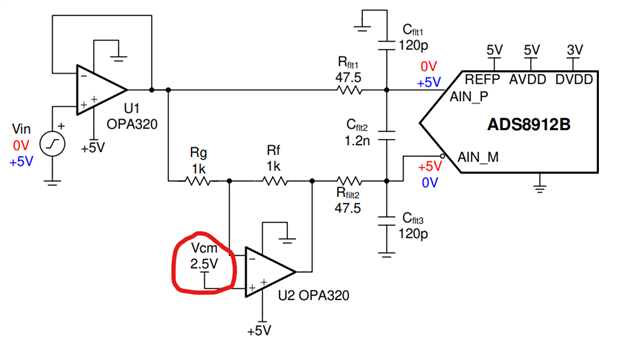Other Parts Discussed in Thread: OPA320, ADS8912B, OPA2320
Tool/software:
Hello, I am currently working on a signal conditioning circuit where I plan to use the ADS127L18 at the end of the analog signal chain. I plan on configuring the device to be in High-Speed Mode, 25.6MHz clock external, 1024 OSR, Wideband Filter, and both input and reference buffers ON. The Vref will be 2.5V, 1x input range. The input signal will be less than 15kHz.
The sensor signal will be single ended going through an instrumentation amplifier first before reaching a driver circuit which then feeds into the ADC. I planned on using two ADA4805 op amps to do single ended to differential conversion as well providing the drive for the ADC input. In the datasheet for the op amp, it shows the circuit to achieve this but doesn't go into much detail as to how to select values for the passive components.
There is also this TI app note "Single-ended to differential using a two op-amp circuit (Rev. A)" that describes the design in more detail with links to videos, but this is for a SAR ADC. The ADC for this post is a delta sigma which I am unsure if I can follow these guidelines for a SAR ADC. If anyone has some advice on this, I would greatly appreciate it. Thanks!






